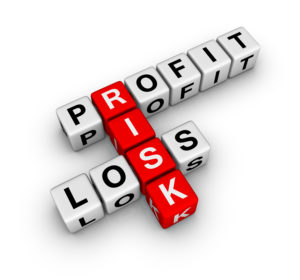I’ve made my living for the last 25 years as a management consultant. Over that period, I’ve noticed common problems with troubled companies. I’ve concluded that if these problems are not solved in a reasonably sequenced manner, they almost always fail.
Here are the three problems.
One, troubled businesses do not seem to be able to cut expenses at critical times.
Two, troubled businesses try to grow revenue without first making legitimate budget cuts. And,
Three, they are hesitant to invest in new products if and when they start to make a profit.
One: Incapable Of Making Cuts
All businesses, successful or not, are faced with having to make cuts in their expenses. However, only the successful ones do. Problem companies are challenged when it comes to making cuts, because they wait too long before they make cost cuts.
I’ve seen this so many times, that I don’t hesitate to describe it as a common and persistent pattern of behavior among failing businesses. There are several possible reasons why this occurs. Here is one.
There was this giant newspaper that lost close to $60 million in classified ad revenue in one year. The major shareholder, who was also the corporate CEO, prevented the general manager from making cuts to offset the losses in revenue. Why? The CEO thought the revenue loss was a short term problem. The revenue never did return. The newspaper is now in so much trouble, it will never recover. Eventually, cuts were made, but it was too late.
Odd as this may sound, top management in many cases is too slow to take decisive action to control expenses by cutting costs. When it comes to controlling costs, top management has a chronic aversion to cost control. It is the rare exception when top management aggressively pushes cost containment on a systematic and consistent basis.
Two: Unwilling To Cut, Then Grow
Successful companies start out by ensuring cost containment before they commit their managers to revenue growth. Failing companies have a pattern of trying to make up loses by increasing revenue goals without first making legitimate cuts to their expenses.
That’s what this giant newspaper did. Before it came to grips with its cost structure, it went out and bulked up on more sales people. It put unrealistic expectations on them, thinking that by increasing revenue alone their problems would be solved. Just the opposite occurred. It became a revolving door of sales people being hired, then being fired.
You can’t grow your way to profitability and success solely. You cut and grow your way there, in that order.
The central issue in business is having a cost structure in place that is modest enough, so that when new sales are generated, they are relatively large enough to materially impact profitability.
You never want to put unrealistic pressure on new revenue generation. It leads to over promising and under delivering. When those who generate the revenue have to exaggerate what they are selling in order to get orders, the value proposition of the product becomes terribly, terribly distorted.
When this occurs, corporate dishonesty is born. This is the worst thing that can happen to a business culture. It breeds an environment where everyone has to exaggerate to make the company function. The company dissolves into a fiction.
Three: inability to invest in new products
Revenues minus expenses equal profit. Part of a company’s profit should go to the shareholders, and part of the profit should go to making new products. Always.
I’m concerned if a company has finally reached profitability, but with only one product. Eventually that one product can’t carry the load of increasing profits. Every product has its life cycle.
There are two ways to make new products. You can improve and extend your present product, or you can make an entirely new product.
With reference to the first way, I like what Grenx is doing. We started out with one flavor with our GreenTeaHP brand and that one flavor has turned into 36 flavors. Our market has grown, because our flavors have grown. (While we did this, we also put a cost structure in place that made doing this possible.)
With reference to the second way, I know of a large beverage company that simply goes out and buys new brands.
Conclusion
Grenx is a family owned business. We are diligent about controlling costs, increasing sales, and continually investing in new products. I love practicing what I preach.
And if there is one thing I particularly love about Grenx, it is the new products we create. We control costs, we generate more and more revenues, and we have a hyper focus on creating better products and new brands. Our business is successful, and will continue to be so. We do not compromise on the formula for success.
